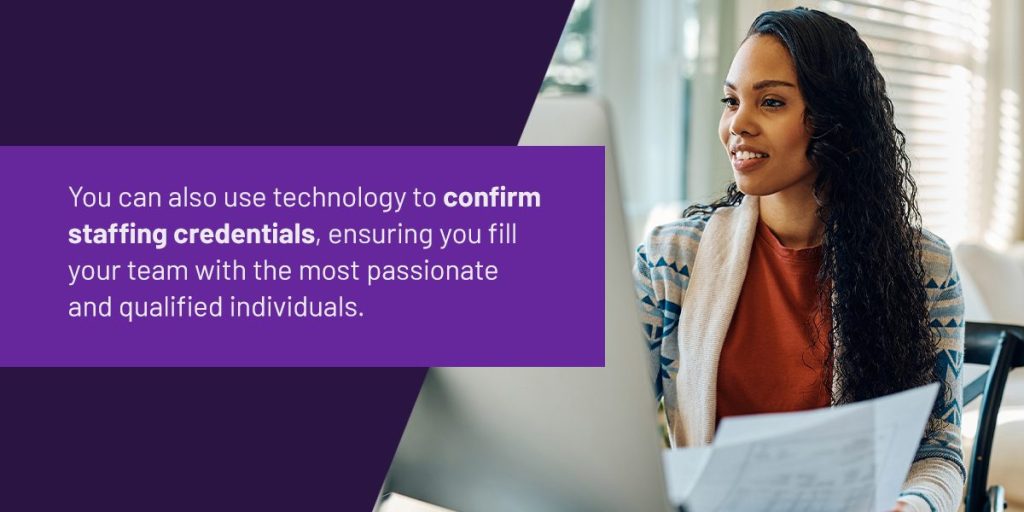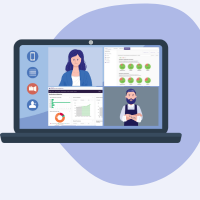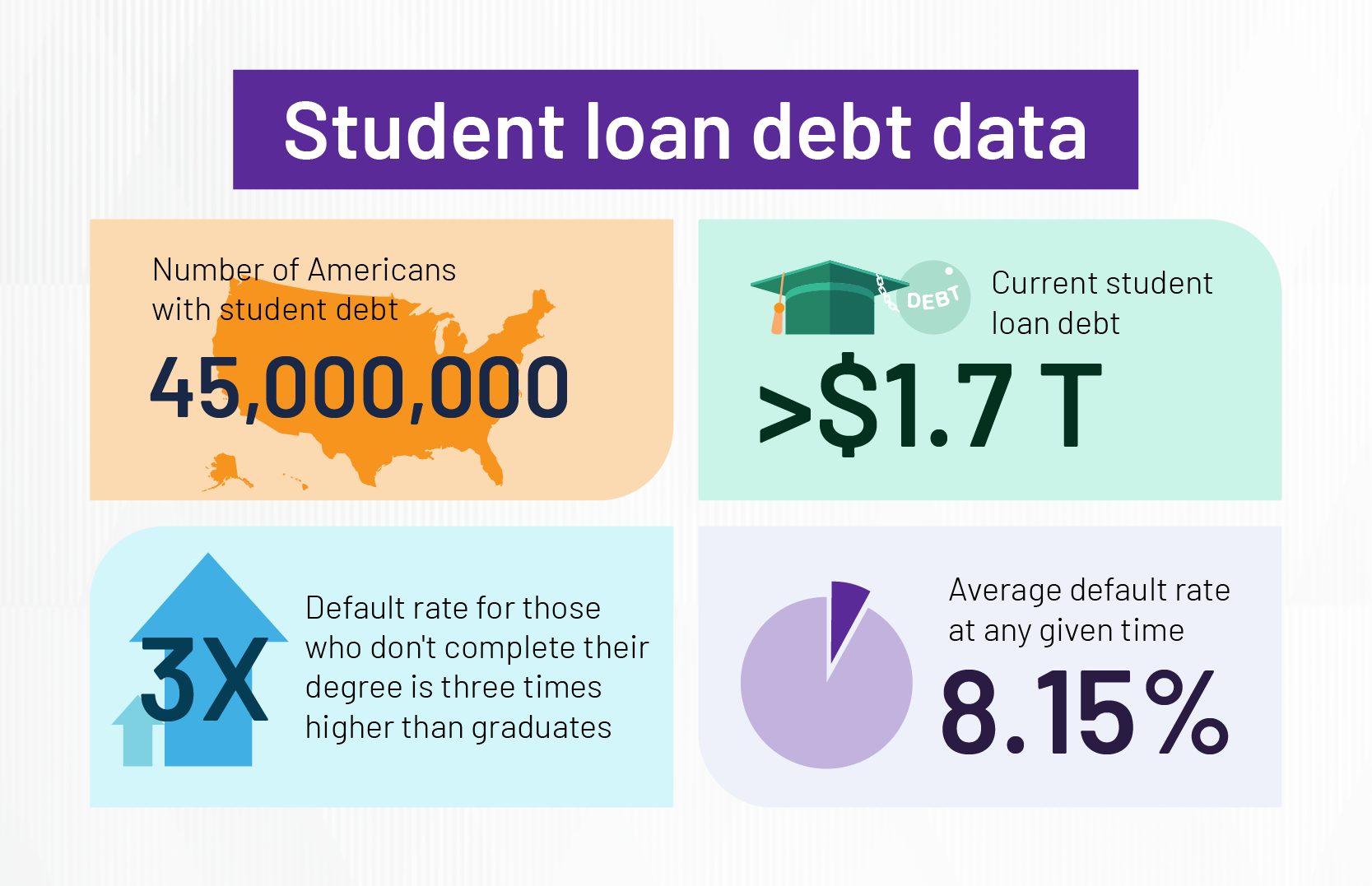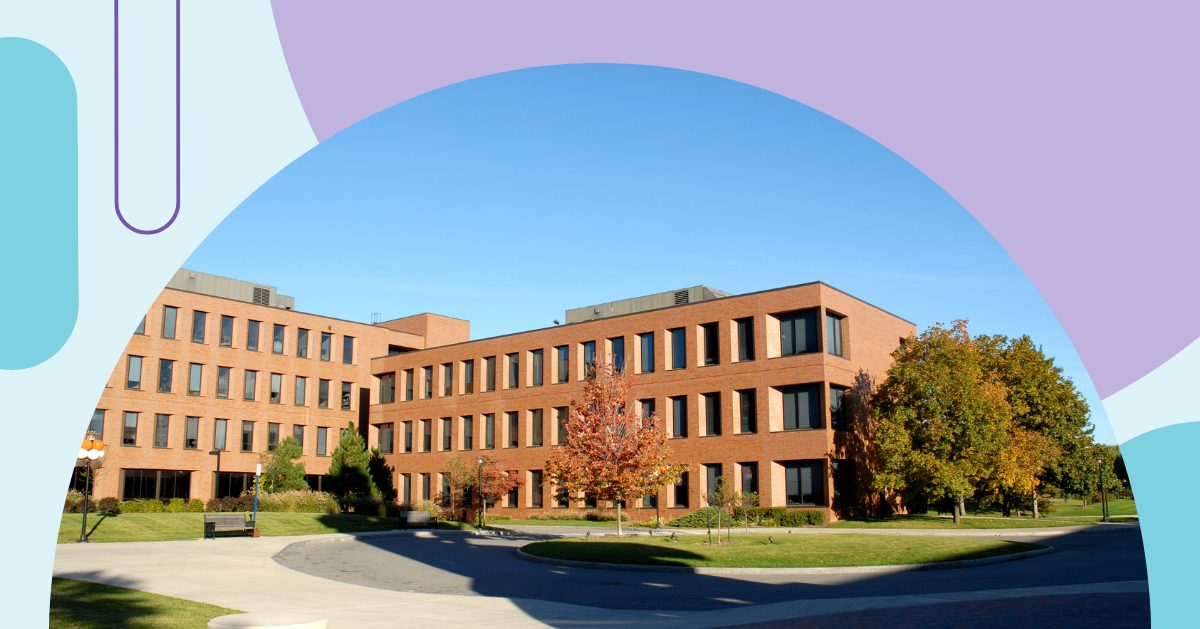Educators and school administrations face a constant influx of tasks and paperwork, constantly uploading data and researching trends. They need new ways to streamline their processes so they can dedicate their valuable time to other, more productive tasks.
Why Use Technology to Reduce Workload?
Of the various methods you can use to help your faculty reduce their workload, faculty technology is one of the most effective. Technology offers several solutions to help streamline processes, creating lasting results that will benefit your faculty and staff for years to come.
The right faculty technology helps educators lighten their workload and amplify their impact. Though crafting syllabi, writing reports, and taking attendance are tasks instructors can usually only complete themselves, technology can help them identify trends and cut out repetitive tasks. Good solutions position faculty to resonate with more audiences and engage with learners in increasingly tailored ways.
On top of eliminating redundant work, you can also encourage your faculty to pursue other interests. Storing data in a centralized online location lets them use the time they spent hunting for information for more meaningful tasks. With effective technological support, educators may find they have more time for self-study, creative projects, and scholarship that further qualifies them in their field.
Technology in education can:
- Enable efficient and targeted learning: Videoconferencing can help instructors engage online students as they would in the classroom. Creating an online assignment or module lets your faculty encourage self-paced learning. Teachers can also set up discussion boards to generate conversations about the material, providing more of a classroom feel and helping students retain the information. This format’s versatility allows instruction to more readily reach different types of learners.
- Track records and plans: When educators assign papers, worksheets, and other assignments, they create a cycle of handing out and receiving documents. Using software to set and record assignments instead can break that cycle. Students have a reference point for guidelines, while instructors can track work submissions and refer to them later without rifling through stacks of documents.
- Eliminate repetitive tasks: Using automated processes reduces time and effort on administrative tasks. Technology can help automate aspects of managing and monitoring things like enrollment, attendance, assessment and evaluations, allowing faculty to focus on the ways they uniquely add value to these processes and increasing productivity, efficiency, and responsiveness.
- Create flexible environments: Technology for a hybrid educational setting can help colleges and universities develop flexible schedules. With online assignments and communication, classes can meet even when weather conditions or other commitments might make it challenging to meet in person. This allows students more freedom to balance their coursework with the rest of their lives.
- Ease compatibility integration: Your staff likely already uses technology throughout the day, switching between several applications with different logins. Using one cohesive system lets your faculty access most of their software in one location, helping them work more productively.
- Secure information: People who have experienced lost folders or deleted files know the pain of losing information. Your faculty may be spending extra time creating multiple copies or saving data in more than one location to avoid that possibility. Reliable technology that holds all your essential data will reduce the time your faculty need to spend creating safety nets.
- Encourage self-studies: When your faculty has the technology to find information quickly and automate repetitive tasks, they have more time to devote to what they find meaningful. They might use that time to engage more with students, conduct research, explore creative projects, innovate in their teaching practices, propose curriculum improvements, or participate in service work on campus. Your staff will feel more rewarded in their personal and professional lives while building their skill sets.
How to Reduce Faculty Workload With Watermark Faculty Success
Watermark Faculty Success is a unique software that efficiently manages and tracks details about your faculty’s numerous activities and accomplishments. Read on to learn about the key benefits of having a faculty activity reporting tool.

1. Capture Key Data
Our Faculty Success software makes it easy for your faculty to maintain a record of their credentials and teaching, research and service activities, and tap into it in numerous ways to support their professional pursuits. Specialized tools for data collection and reporting make quick work of tracking accomplishments and producing reports for various audiences. From this central hub of activity information, you can highlight faculty accomplishments, foster insightful reviews, and produce reports for important campus initiatives like program review and accreditation. Centralizing this information makes it easy to access whenever you need it.
To lighten the load on faculty and maximize efficiency, you can:
- Import CVs or annual activity reports to quickly build a full history of activities.
- Bring student course evaluations into faculty reviews seamlessly through an integration with Watermark Course Evaluations & Surveys.
- Import data from course management, campus HR, and grant systems and publication databases.
You can be sure that your data will be easy to find and streamline the activity reporting experience for faculty, staff and administrators alike.
2. Update Web Profiles
With Faculty Success, your faculty’s web profiles will stay up to date with accurate information for potential students and other stakeholders to easily find. From contact information to teaching philosophies to expertise and activity summaries, your faculty can put their best foot forward to anyone who’s looking.
3. Simplify Review Processes
Watermark Faculty Success helps simplify the faculty review process for everyone involved. Build-out is easy with tools to visually map out your institution’s evaluation, reappointment, promotion, or tenure process. Add branches for conditional rules, steps for rebuttals, define feedback forms and instructions for participants, and pull activity reports and course evaluations in automatically so faculty can focus on reflecting instead of compiling. Assign nuanced access so materials reach the right people at the right time, and use automated reminders to help keep things on track. This organization brings much-desired order and efficiency to the administrators tasked with managing and monitoring faculty review processes, consistency and convenience to those doing the reviewing, and clarity and confidence to those being reviewed.
It all leads to a more efficient, productive, and satisfying review process for your faculty.
4. Find and Record Data
Our reporting options — out-of-the-box, custom, and self-service — will enable your faculty, staff, and administrators to deliver reports quickly, locate answers, and dive into insights. You and your faculty can use these tools to analyze, measure, and reflect on current details and trends; you can also meet specialized needs for institutional and programmatic accreditation, award and grant applications, and conference submissions.

Request a Demo of Faculty Success
Watermark has spent the last 20 years working to provide higher education institutions with high-quality solutions that streamline data and increase productivity. We aim to develop innovative technology that you can trust.
People are at the center of our focus on data and technology — better technology and valuable data help improve student learning experiences. Everything we create is to help you increase your efficiency and productivity so you can dedicate your efforts to what really matters.
We want to encourage you to use your data to identify trends in your institutions and fill the gaps your students, faculty, and staff are experiencing. Our software empowers you to demonstrate and improve student learning, program quality, and institutional effectiveness. Request a demo of Faculty Success and start using innovative technology that reduces your faculty’s workload and celebrates their impact.
















































































































































































































































































































































































































